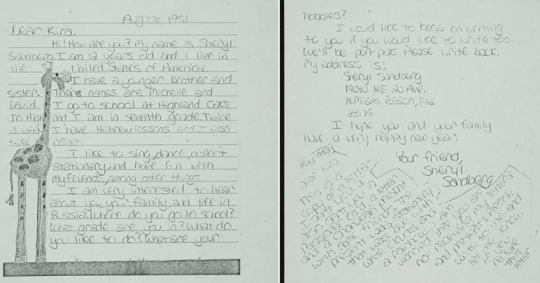We’re honoring National Preservation Week (April 26 through May 3) with a series of posts from our archival experts about the best way to take care of your precious artifacts at home. From April 29 to April 30, we’re also holding free events at the Center. Come by to learn more in person!
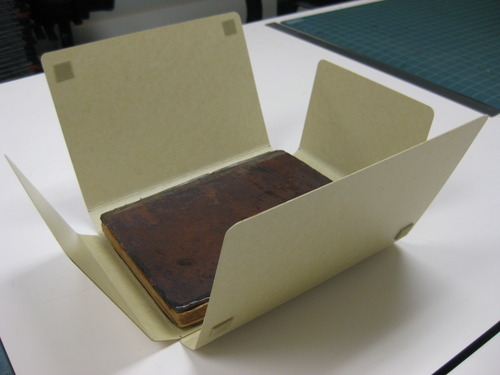
Above: A protective enclosure for a fragile book.
by Felicity Corkill, Associate Conservator, Center for Jewish History
One of the most important ways to preserve archive and library materials is to keep them in quality housing. That means an archival enclosure that keeps out dirt, dust, insects, light, water and atmospheric pollutants, all of which deteriorate heritage materials. Enclosures also provide support for fragile materials and protect them from handling damage.
An added benefit: Keeping collection materials in a box buffers the contents from rapid and extreme changes in temperature and relative humidity—which can cause artifacts to expand and contract too quickly, causing warping and breaking. (We’ve provided a guide to good climate practices in another post in our Preservation Week series.)
At the Center’s Werner J. And Gisella Levi Cahnman Conservation Laboratory, we make many types of enclosures for collection materials of all shapes and sizes. For flat archives or artworks, we use flat four-flap folders or encapsulate them in clear archival plastic.
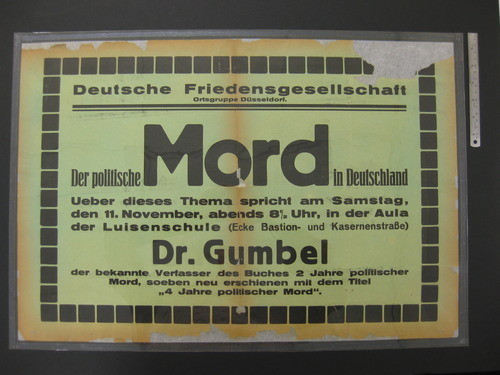
Above: Clear archival plastic encapsulates a poster.
For delicate books, there are several styles of protective boxes, depending on the resources available (e.g., time and materials) and the condition of the book. While the drop spine box is a high-quality enclosure, it’s also the most time-consuming to make, so it’s only used for very fragile and rare books.
The clamshell box is strong, and good for both books and archival material. Four-flap folders and cased four-flap boxes offer excellent protection for most library materials. Fortunately, they are quick and easy to make, which means more books can be protected.
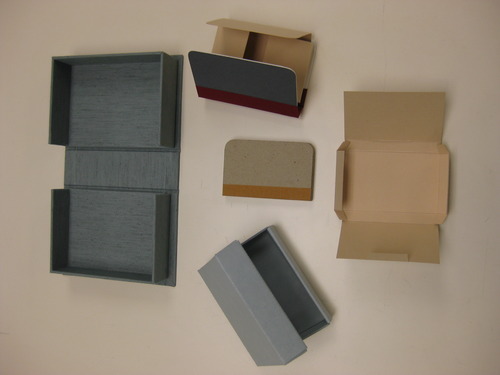
Above, clockwise from top: Drop spine box; cased four-flap folder; four-flap folder, clamshell box; notebook in center.
We recently created a book wrapper for a fragile minute book. The committee had pasted typed minutes into every page of the book, resulting in a much thicker book than the binding was made for.
Age and handling resulted in a very weak binding, so the book needed a box to protect it. Due to the distortion, the box had to be adapted to create an even thickness; otherwise, the box itself could be unevenly crushed on the shelf and cause damage to the book.
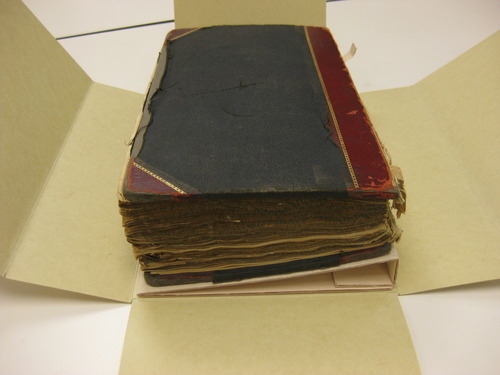
Above: A wrapper for a minute book with thick pages and a weak binding.
When storing heritage materials such as papers, books, photographs and textiles, the storage container should fit the items comfortably. It should neither be too small or too large, though any gaps can be filled with scrunched acid-free tissue paper.
All paper and cardboard folders and boxes should be made from acid-free or lignin-free materials. Archival plastics used in boxes or photograph albums include polyester, polypropylene and polyethylene (trade names Mylar or Melinex).
For heritage materials in home collections, an important consideration: When dealing with a torn item, never use Scotch tape as a quick fix. It is much better to store the item safely in an acid-free folder or box for later repair by a professional.
More posts in our National Preservation Week series:
Your Digital Family Album: A System for Safekeeping
Start Making Sense: Ordering the Chaos of AV Material
Defending Precious Artifacts from Mold and More
Organizing Digital Files: Getting Your Photos and Scans in Shape

